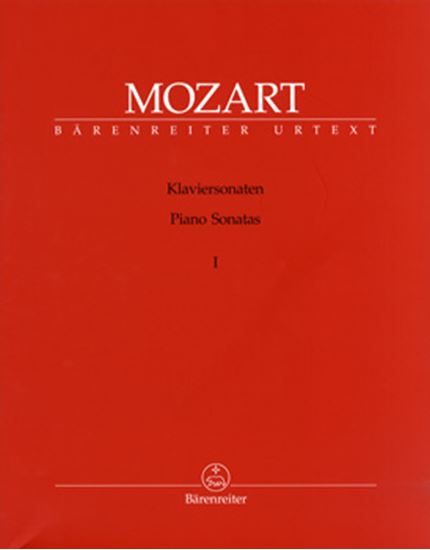Mozart, Wolfgang Amadeus : Sonate für Klavier Nr.6 'Dürnitz' Mov.1 Allegro
Work Overview
Genre:sonata
Total Playing Time:7 min 30 sec
Copyright:Public Domain
Commentary (2)
Author : Inada, Saeko
Last Updated: February 26, 2021
[Open]
Author : Inada, Saeko
Allegro, D major, 4/4 time. Sonata form. Influences attributed to the Mannheim School include a brilliant opening with arpeggios, clear dynamic contrasts, and the use of the descending second 'sigh' motif. This movement possesses a broad, symphonic sound.
Author : Ooi, Kazurou
Last Updated: July 21, 2025
[Open]
Author : Ooi, Kazurou
This is a delightful and elegant first movement. It is truly an operatic scene, and its characterization as "orchestra and song" is undoubtedly accurate. There is no strict need to precisely categorize which parts are vocal and which are orchestral. For instance, measures 30-32 can be interpreted as an orchestral section; however, if one extracts the melody written in the treble clef, the five notes H-A#-H-A#-H in measure 30 could also be considered a vocal part, so there is flexibility in interpretation.
Now, this first movement features a distinctive rhythm: a dotted eighth note followed by two thirty-second notes, appearing in the right hand on the first beat of measure 12. This rhythm is written throughout the piece. It is a more witty expression than a simple eighth note followed by two sixteenth notes. However, there are sections where this poses a significant problem.
This problem arises with the same rhythm appearing in measure 40, written in the right hand on the first beat. However, when played at a certain tempo, this unit becomes almost physically unplayable. The thirty-second notes simply cannot be played. From this point, I leave it to your judgment. There are two methods:
- To play all notes accurately, for units like those in measure 40 or measure 43, one approach is to alter the rhythm and play them as an eighth note followed by two sixteenth notes. Indeed, some professional pianists adopt this method in their recordings.
- The other is to omit the inner voices of the thirty-second note section. In measure 40, for example, one would omit the inner voices D and B on the first beat. This method allows for maintaining rhythmic accuracy even with the omission. What are your thoughts? As for the author, I would choose the method of preserving the rhythm by omitting notes. This is because I feel rhythm is paramount, even if it means omitting notes, but ultimately, it is up to the performer's discretion.
PTNA & Partner Channel Videos(0items)
Sheet Music
Scores List (9)

(株)全音楽譜出版社

(株)全音楽譜出版社

(株)全音楽譜出版社

(株)音楽之友社

(株)全音楽譜出版社

ヘンレ社(ヤマハ)




